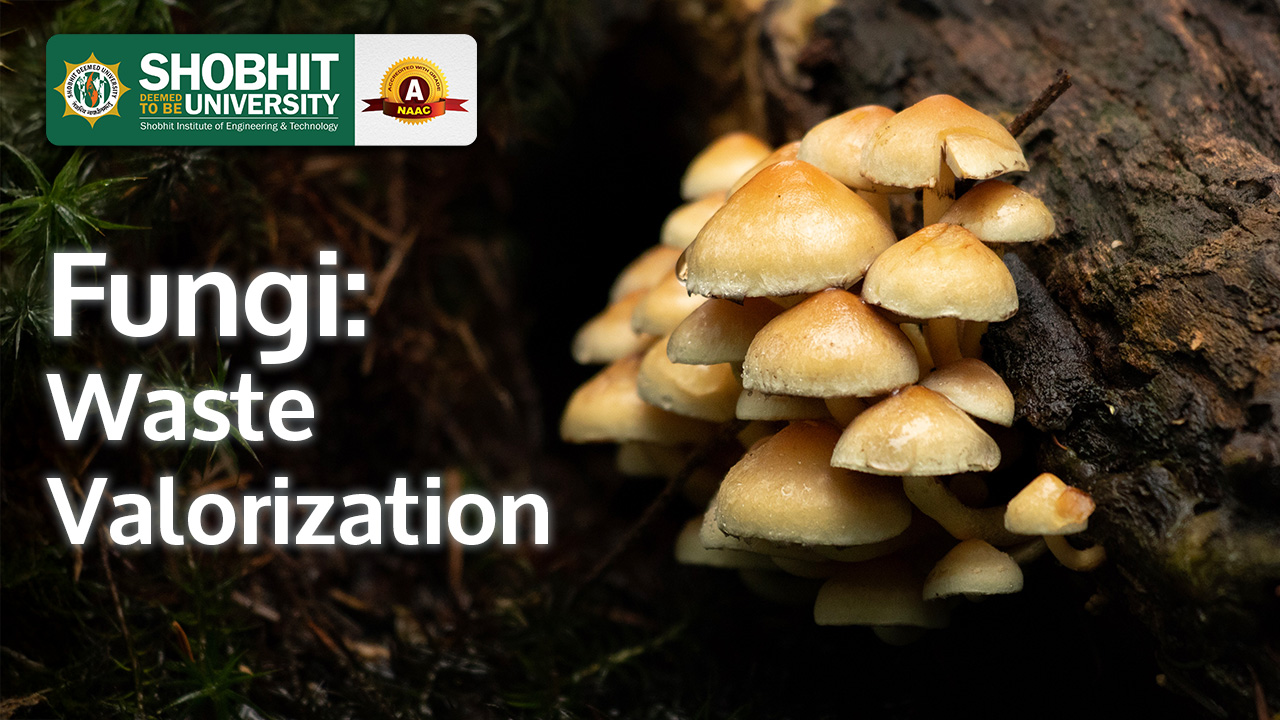
Fungi: Waste Valorization
Introduction
Fungi offer a powerful and sustainable solution for turning various types of waste into useful products a process known as waste valorization. Through unique enzymes and metabolic pathways, fungal species can break down complex agricultural residues, food processing by-products, spent mushroom substrate, and industrial effluents. This not only reduces environmental pollution but also creates valuable outputs such as enzymes, biofuels, organic acids, bioplastics, and mycelium-based materials. For example, filamentous fungi like Aspergillus niger, Trichoderma reesei, and white-rot species such as Phanerochaete chrysosporium and Pleurotus can grow on lignocellulosic wastes like wheat straw, rice husks, or bagasse and convert them into useful enzymes such as cellulases, xylanases, and lignin-modifying enzymes (LMEs).
Methods of Fungal Waste Valorization
Fungal valorization typically uses two major fermentation methods: solid-state fermentation (SSF) where fungi grow on moist solid substrates and submerged fermentation (SmF) where fungi grow in liquid cultures. In SSF, dry agricultural residues like wheat bran, corn stover, or rice husk are used; fungi such as Aspergillus awamori, Thermoascus aurantiacus, and Trichoderma viride produce large amounts of enzymes like phytase, xylanase, and ?-glucosidase under optimized conditions.
White-rot fungi such as Phanerochaete chrysosporium and Trametes versicolor secrete lignin-modifying enzymes like laccases and peroxidases. These degrade lignin in wood-like residues, allowing cellulose and hemicellulose to become accessible. This fungal pre-treatment makes the waste more suitable for further processing, improving the production of biofuels and biomaterials.
Applications Across Multiple Industries
Enzyme production: Fungal fermentation yields industrial enzymes such as cellulases, xylanases, ligninases, proteases, lipases, phytases, and lactases. These enzymes are crucial in food, textile, paper, detergent, and bioremediation industries Biofuel and organic acid production: Sugars from fungal degradation can be fermented into bioethanol, biobutanol, and bio-based organic acids like succinic and citric acids. For instance, Aspergillus niger grown on sugarcane bagasse produced about 2.5?mg/g citric acid . Single-cell protein (SCP): Fungi such as Neurospora intermedia can grow on industrial wastewater to produce protein-rich biomass (~45% protein) and generate biomethane during anaerobic digestion. Bioplastics and mycelium-based materials: Fungal mycelium, grown over waste substrates like corn stalks or sawdust, can be processed into biodegradable alternatives for packaging, insulation, textiles, and even leather-like materials. One study used bread waste to grow Rhizopus delemar and produced microfibers, chitosan, and antimicrobial hydrogels for medical textile and food applications. Bioremediation and wastewater treatment: Fungi such as Cunninghamella elegans, Phanerochaete, and other white-rot species can degrade industrial pollutants, dyes, and hormones in wastewater. These enzymes break down harmful compounds and sometimes sequester heavy metals.
